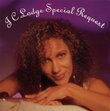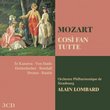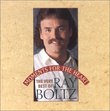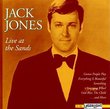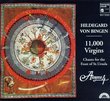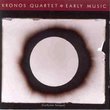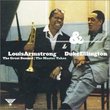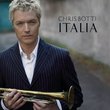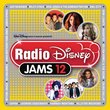| All Artists: Stefan Parkman, Mikael Bellini, Lucia Negro, Uppsala Academic Chamber Choir, Stockholm Sinfonietta Title: Alfred Schnittke: Symphony No. 4 for Soloists, Choir & Chamber Orchestra / Requiem Members Wishing: 1 Total Copies: 0 Label: Bis Release Date: 6/23/1993 Album Type: Import Genre: Classical Styles: Opera & Classical Vocal, Historical Periods, Early Music, Modern, 20th, & 21st Century, Symphonies Number of Discs: 1 SwapaCD Credits: 1 UPCs: 750582030529, 7318590004975 |
Search - Stefan Parkman, Mikael Bellini, Lucia Negro :: Alfred Schnittke: Symphony No. 4 for Soloists, Choir & Chamber Orchestra / Requiem
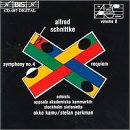 | Stefan Parkman, Mikael Bellini, Lucia Negro Alfred Schnittke: Symphony No. 4 for Soloists, Choir & Chamber Orchestra / Requiem Genre: Classical
|
Larger Image |
CD DetailsSimilar CDs
Similarly Requested CDs
|
CD ReviewsGood quality overall; relatively slow tempo in many places Stephen J. Snyder | Lancaster, Texas United States | 10/17/2003 (4 out of 5 stars) "The tempos in the Requiem are what I am referring to. Compare especially the Tuba Mirum to some other recordings. In general, I prefer uptempo interpretations of most classical pieces when offered multiple versions. However, the noticeably slower tempo works well here -- it acheives a stateliness without dragging." An early polystylistic piece paired with Schnittke's most my Christopher Culver | 08/24/2008 (4 out of 5 stars) "This BIS disc contains two of Alfred Schnittke's works for choir and orchestra. The Stockholm Sinfonietta and Uppsala Akademiska Kammarkor perform, conducted by Stefan Parkman in the first piece and Okko Kamu in the second.
Schnittke's "Requiem" (1974-75) is one of the early works of his polystylism era, when he liberally embraced the hallmarks of the baroque, classical and early Romantic eras, letting a whole mix sound together through a work. Here traditional Requiem stylings reminiscent of Mozart and Dvorak are supplemented by allusions to Russian Orthodox chant. This traditionalism, however, is slowly stretched into directions earlier composers would have never gone towards. The "Tuba Mirum", delivered by male voices as the female singers maintain a chant of "tu-ba mi-rum, tu-ba mi-rum", is rooted in common practice tonality, but utterly modern in its effect. The climax of the piece comes with the "Credo", not a movement generally found in a requiem, but which is proudly belted out as a rock drum kit joins the traditional orchestral sounds. The ending of the piece unusually reprises "requiem aeternam" instead of the customary "lux aeterna". While I feel that Schnittke was still to further refine his "polystylistic" approach and that the works of the early 1980s show greater maturity, this is still a fine piece. The "Symphony No. 4" for 2 soloists, piano, chamber chorus & chamber orchestra (1984) is a harder nut to crack. Written at a time when the Jewish born composer had embraced Roman Catholicism, it is a mystic work with four strands, three being the distinct musical developments of the Roman Catholic, Orthodox and Protestant churches, and the fourth a semitone-based line meant to suggest the synagogue tradition. Each of these strands is linked to a different keyboard instrument, which maintain a continuo at certain points through the work. The climax of this symphony is the choir singing a sublime "Ave Maria". While the soundworld of this symphony is instantly intriguing and one realizes that there is massive significance encoded into the work, initial listenings of the symphony are probably going to evoke bafflement. I think it's pretty clear why the Fourth especially is rarely programmed in concert. Still, if you are a Schnittke fan who is ready to commit yourself to this arcane yet fulfilling revery." |

 Track Listings (15) - Disc #1
Track Listings (15) - Disc #1